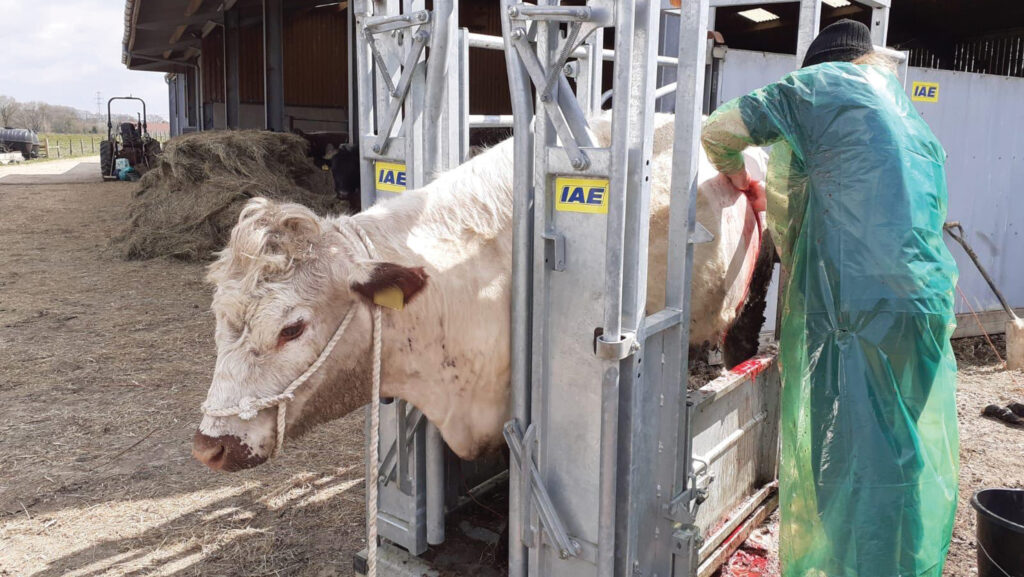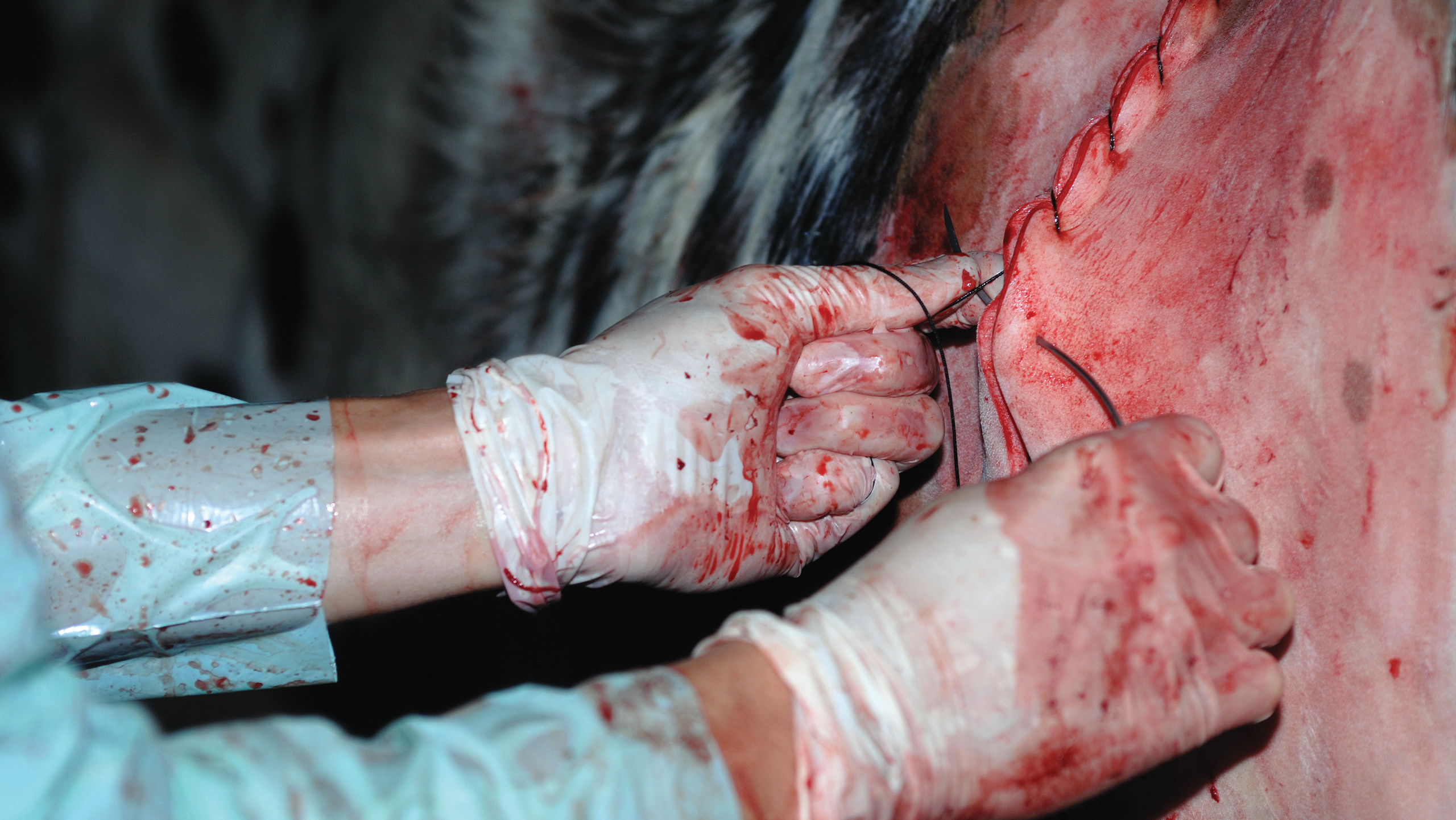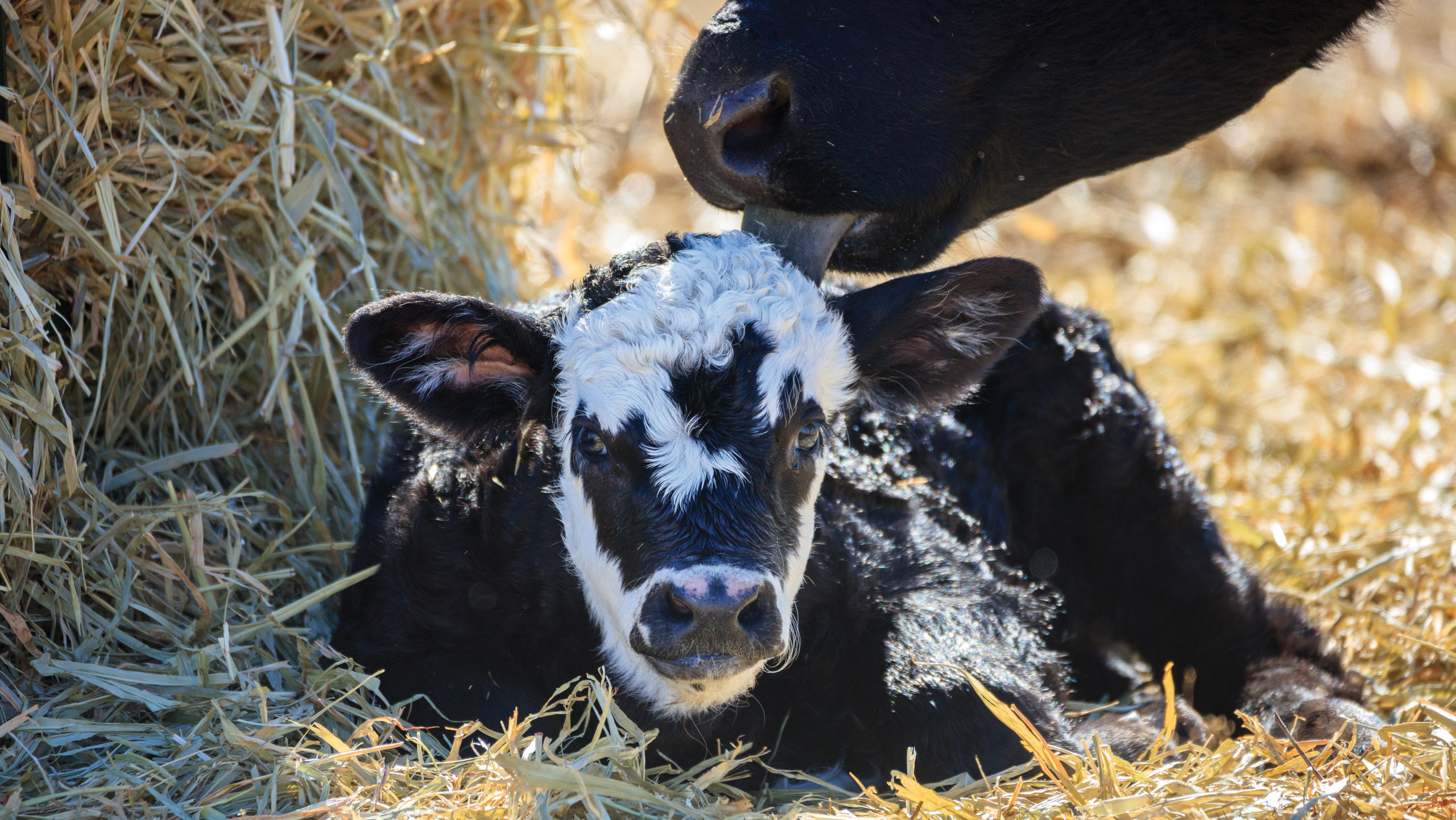Causes of calving caesareans and how to reduce interventions
 © VetPartners
© VetPartners A vet audit of more than 600 caesarean sections performed on cattle showed that the majority – 77% – took place in suckler herds. And in 62% of all cases, the procedure was carried out because the calf was too big for the pelvis of the cow or heifer trying to calve.
Furthermore, dam survival rates at 60 days were slightly better (89%) where there had been no significant prior assistance by the farmer, compared with 83% when there had.
See also: What is pelvic scoring and how valuable is it for calving?
Starting in 2021, 25 VetPartners practices have so far provided data about caesareans on 461 farms across the UK. Senior vet Mel Julian of Cross Counties Farm Vets helped organise the audit to find out why they were being carried out and how successful they were.
Survival rates
She says data analysis showed a survival rate of 87% in cows 60 days post-procedure (although some cows were subsequently culled). When a caesarean was carried out, 74% of calves were born alive, and 90% of these were alive seven days later. Of the 26% not surviving, 23% were already dead or not viable on delivery, and 77% were freshly dead, indicating that the calving had been too stressful for them to survive.
Reason for caesarean section
More than 60% of recorded caesareans took place because the calf was too big – or the heifer or cow too small. But reasons for this will vary farm to farm, says Mel. “Some will be down to breeding, [especially] if farms are breeding for certain characteristics like double-muscling, which impacts the size of calf coming out.”
Nutrition and body condition also play a key part, she adds. Cows that are too fat at calving will have laid down fat in the birth canal making it harder for the calf to come out.
The audit showed malpresentation of the calf was responsible for 14% of caesareans. Soft tissue obstruction (swelling in the birth canal from a long calving) led to a further 6%; torsions, 5%; and 3% were elective surgeries.

© Adobe Stock
Age of cow
In 33% of cases, animals given a caesarean were about two years of age. Three-year-olds made up 20% of procedures, while 32% were “middle-aged” and 6% were carried out on old cows.
“If we group together heifers under 20 months [9%], and the two- and three-year-olds, they make up 61% of all the c-sections we recorded,” she points out, adding that this is further evidence of the need for careful selection and management of replacement heifers and the bulls used on them.
“It’s not just caesareans: any calving intervention has an impact on the cow and the calf and increases the risk of calf mortality, whether that be immediately or down the line,” she points out.
Timing of intervention
When help was needed at a calving, farmers waiting longer before calling the vet saw lower survival rates than those who acted more promptly.
“There’s always the temptation to give it another five minutes, but after 20 minutes I would stop and think about getting help,” says Mel, adding that wider research shows the longer the cow is trying to calve, the more stress on both calf and cow, the more inflammation, and the more tired the cow gets.
“We like to be able to pass a hand over the top of the head of the calf at the pelvic rim quite comfortably to know there’s room. If the feet only come so far out of the vulva and won’t shift further, or if the front legs are crossing over, that indicates there’s a lot of pressure on the shoulders and suggests it will be too tight,” she advises.
“Look for those signs early, rather than trying and trying and hoping the calf will magically pop out and be OK. It’s easy to lose track of time, so set a timer or check the time before you start, so you know how long you’ve been doing any intervention.”
Type of restraint
Vets were also asked to record whether the animal was restrained in a crush, with a calving gate, a halter or other type of control. Analysis showed 29% were held using only a halter.
This is a big safety issue, says Mel, as most human deaths on-farm are caused by animals, predominantly cattle. “So, invest time and money to ensure suitable restraint is available,” she urges. “If the cow is swinging about and you’re struggling to restrain her, calving takes longer, and the cow becomes more stressed.”
How to reduce the need for caesarean sections

© Adobe Stock
- Measure what is happening on-farm now. Record which cows have calved unaided and which needed assistance. Note the type of assistance needed, for example: “One leg was back, I corrected it, cow then got on with calving.”
- Anything that reduces intervention at calving will have a positive impact on cow and calf survival and subsequent health. Using genomic testing and estimated breeding values (for maternal calving, direct calving ease, birthweight and gestation length) when selecting bulls will reduce the risk of a caesarean.
- The vet can help assess heifers for suitability as replacements using pelvimetry (measuring the pelvis) and checking the uterus. Breeding from those with smaller pelvises can then be avoided.
- Body condition scoring and nutrition management are essential to ensure animals are in the best shape at calving. Avoid trying to put things right in the lead-up to calving.
- Ensure there are good handling facilities, especially at calving, as this is when cows can be at their most unpredictable, putting farmer and vet at risk of injury or death.
Source: Mel Julian, Cross Counties Farm Vets
